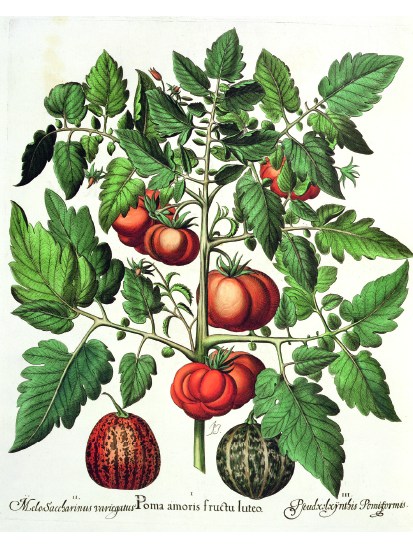Considerable areas of our memory are taken up with food: it might be the taste of Mother’s sponge, the melting texture of an aunt’s buttery pastry or something recent, like the flavour of the first spoonful of a sour and nutty south-east Asian dish. Especially good meals are recalled with the same clarity as revolting school dinners and the stench of stale fish — we can conjure aromatic memories with ease thanks to the olfactory nerve, the brain’s cache of stored eating experience that helps us to tell good from bad when choosing what to eat.
Jennifer A. Jordan, an associate professor of sociology at the University of Wisconsin, believes we should be remembering more than just the sensual pleasures of eating, however. Odd as it may seem, there are individual types among species of foods that are now forgotten. A little-discussed side effect of the last century’s seismic changes in both agriculture and eating habits is the loss of ‘heirloom’ produce. Gone, for example, are Granite Beauty and Newton Pippin apples, Cherokee Purple tomatoes and Hoekurai turnips.
The very thought of a forgotten turnip is enough to get me thoroughly ensconced in Edible Memory. Jordan, struck by the sight of knobbly tomatoes in various colours at her local farmers’ market, wonders where they have been and how it was possible to bring them back from the dead, as it were — and also why we now love these new-old breeds so dearly. She writes from the perspective of American farming and food history, but the similarities to European are close.
How can a tomato get lost? Before agri-business took hold in the 1930s tomatoes were very much the produce of the family vegetable plot. A vast array of tomatoes, giant, small, pear-shaped, lobed, every shade of red, green, striped and yellow, made way for a few hybrids that could grow successfully in conjunction with agri-chemicals; these new tomatoes had thick skin and travelled well, they had shelf life. Flavour was irrelevant to the supersize growers making a fortune from their new product.
Jordan is perhaps more fascinated as to why these old species have returned. Through many journeys she uncovers how ‘these heirloom foods began, tomato by tomato, apple by apple, to return to some degree of popularity’. Fortunately, through all the decades where the attractions of modern chemical farming methods made so many varieties obsolete, heritage seeds were squirrelled away.
A few began turning up in farmers’ markets, then restaurants, then shops, onto the counters of US-wide chains like Whole Foods. Around the mid-1990s in America, approximately the same time that there was a resurgence of traditional breeds of produce in the UK, a reporter commented that ‘Heirlooms are major-league hot.’
And these antiquities have been hot ever since. A multicoloured, multi-shaped heirloom tomato salad is now on so many menus, it is greeted with slight yawns. Jordan notes this, pointing out that certain produce catches the imagination more than others. Tomatoes and apples, for example, seem to resonate with shopper’s imaginations while our ancestral leeks and turnips remain resolutely infra dig. Perhaps they will have their time — like the antiques market which has veered from lusting after gilt Empire console tables to worshipping French provincial dressers.
Yet while the romance of old kitchen garden favourites grips, for a while, Jordan says that they form only a part of our ‘edible memory’.
I use heirlooms as a particularly emblematic form of edible memory, but as I conducted my research I could see that similar patterns clearly were going on with foods that were not technically heirlooms or antiques.
Too true. The revival of something rare is reassuring, but I recall the packet pudding Angel Delight with special fondness, too, because it is reminiscent of a happy time in childhood. So, next time you confront a tomato salad on a plate, tell yourself: this is no ordinary tomato salad, it is a symbol that is about to be planted in your consciousness (I joke).
Plantsmen and anyone who loves food will treasure Jordan’s book — it simply confirms that food is not just fuel.
Got something to add? Join the discussion and comment below.
Get 10 issues for just $10
Subscribe to The Spectator Australia today for the next 10 magazine issues, plus full online access, for just $10.
Available from the Spectator Bookshop, £16.20 Tel: 08430 600033. Rose Prince’s books include The Pocket Bakery, Kitchenella, The New English Table and The Savvy Shopper.
You might disagree with half of it, but you’ll enjoy reading all of it. Try your first month for free, then just $2 a week for the remainder of your first year.














Comments
Don't miss out
Join the conversation with other Spectator Australia readers. Subscribe to leave a comment.
SUBSCRIBEAlready a subscriber? Log in